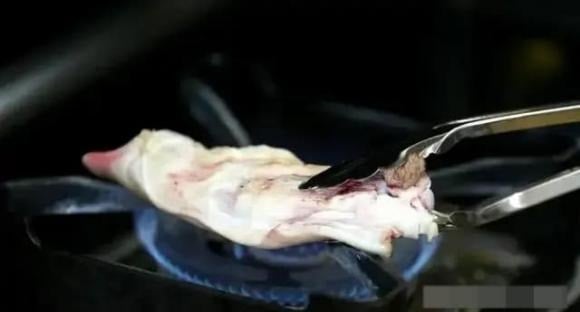Pork is a popular dish in daily meals, appearing in almost every meal. However, a common issue is that pork often has some remaining hair that needs to be removed.
Although these hairs do not affect the taste of the meat, we still need to get rid of them before cooking. There are two common methods to deal with pork hair: burning it off with fire or shaving it off.
While both methods are effective, they can be quite inconvenient. The fire-burning method, though quick, often requires the use of a wire brush to remove any remaining ash. On the other hand, shaving with a knife may struggle with stubborn hairs that are difficult to remove completely.
Why you shouldn’t burn or shave off pork hair?
Despite their effectiveness in removing hair, these methods are not always ideal. Burning pork hair can easily leave a burnt smell on the skin. If the temperature is not controlled well, the skin can get charred, affecting both the appearance and taste. Moreover, there is a risk of burns and fire hazards, which cannot be taken lightly.

Both methods can be ineffective and time-consuming.
Shaving the hair off is also more laborious. Pork hair is very coarse, so removing it completely takes time and effort. There is also a risk of scratching the skin if one is not careful, which is not worth the trouble.
An easy way to remove pork hair
First, thoroughly clean the pork, rinsing off any blood and water, and then soak it in clean water for some time. When the pork is still in large pieces, cut it into smaller pieces or blocks for easier grilling and even cooking.
Heat up an iron pan; once it’s hot, reduce the heat and place the hairy side of the meat onto the bottom of the pan. Use your hand or a clamp to hold the meat and gently rub it against the pan’s surface continuously.
For best results, ensure the iron pan is dry, with no oil or water. When the pan turns red, place the hairy side of the meat onto the hot surface, continuing to rub it gently. The high temperature will burn off the hairs and any remaining impurities.
The high temperature of the iron pan will singe the remaining hairs and destroy the hair follicles, effectively removing any fishy smell. Be careful not to damage the skin, and continue rubbing until it turns brown but not burnt.

Ensure the iron pan is dry for the best results.
This method burns off the hair and follicles while keeping the skin intact, making it softer and improving its texture. Pork belly prepared this way will taste better, whether fried, steamed, or braised.
In conclusion, when enjoying pork, remember to eat the skin, as it will be more delicious. This method not only effectively removes the hair but also keeps your iron pan dry and durable.






























